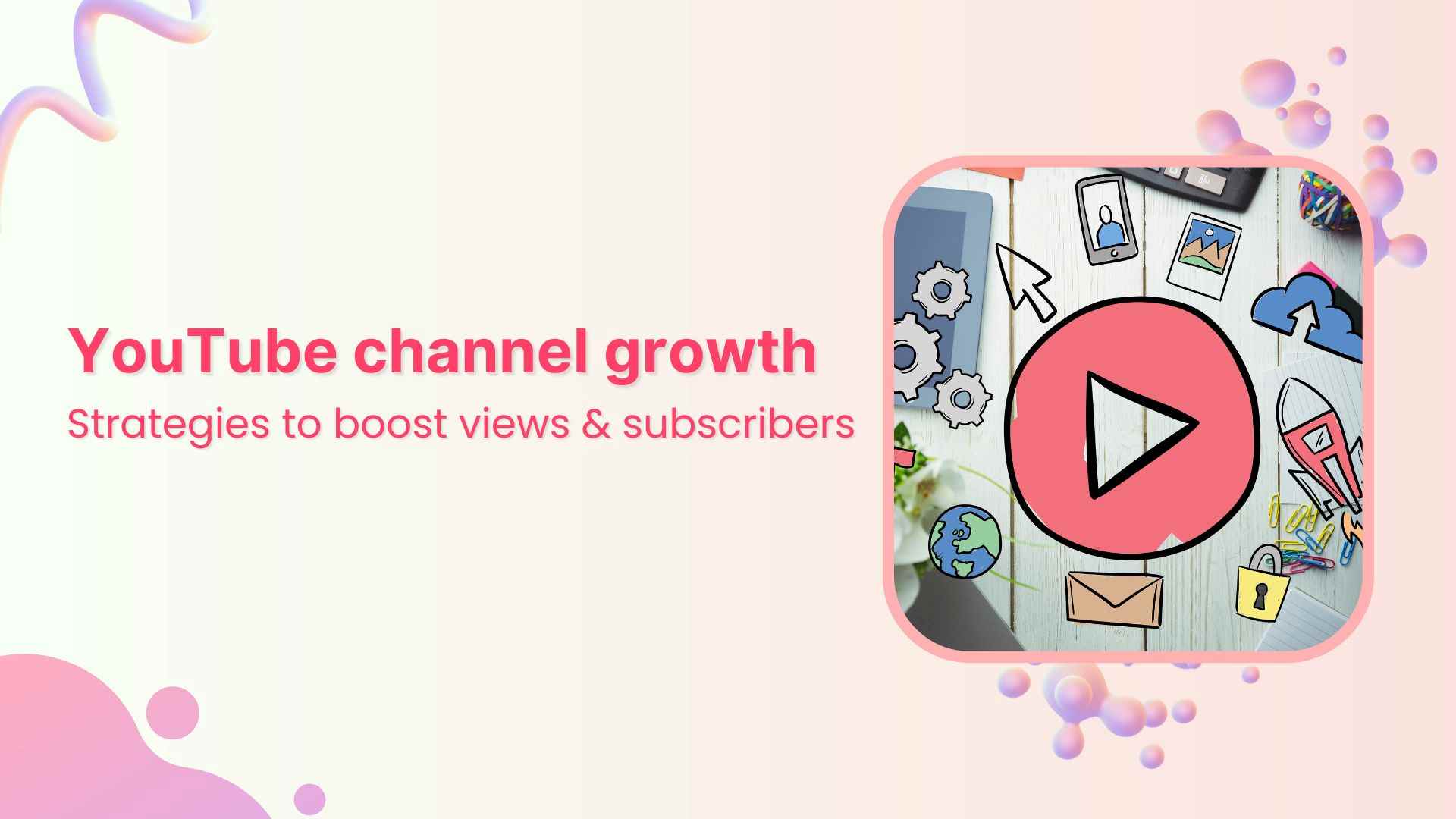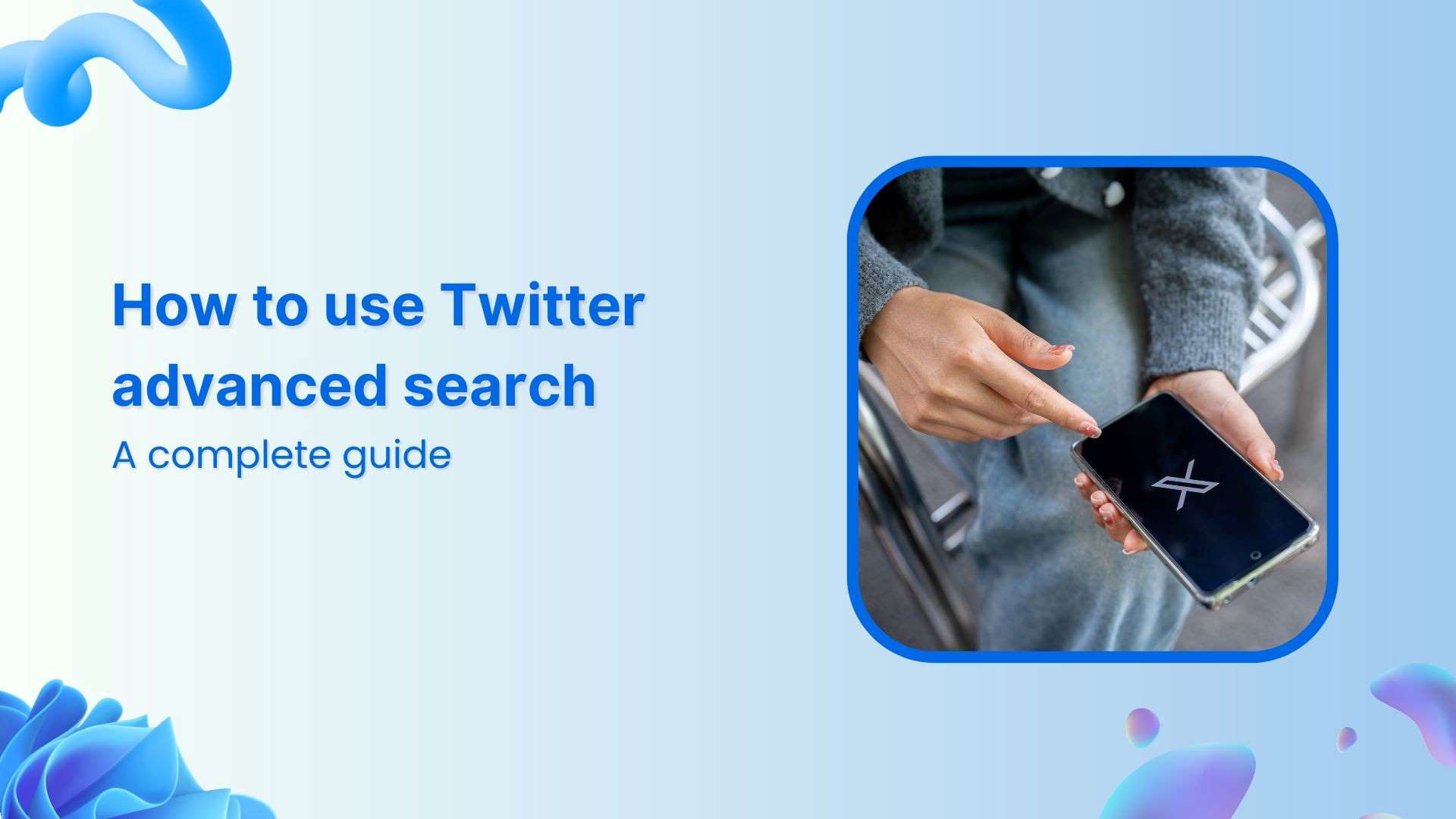Bulk-generate & schedule posts in seconds with Smart Scheduling. Try now!
8 steps to choose the right social media marketing platform
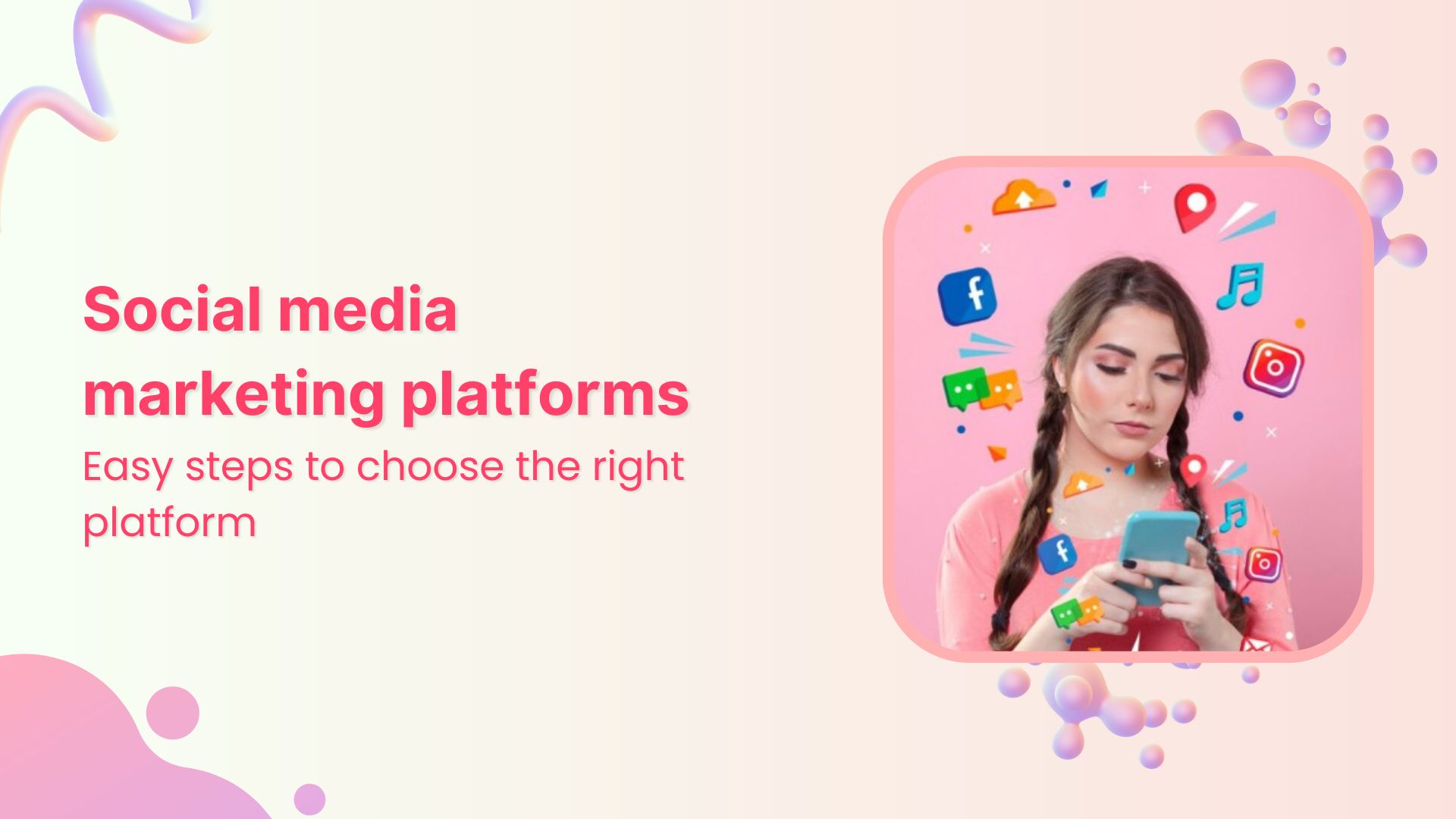
Figuring out social media marketing is all about knowing your audience, staying updated on platform trends, and playing to each channel’s strengths. In today’s ever-changing digital landscape, selecting the right platforms can differentiate between marketing success and wasted resources. With numerous options available, each with its unique audience and features, choosing the perfect mix requires thoughtful strategy and deep market understanding.
This comprehensive guide serves as your roadmap through the social media selection process. We’ll explore proven steps to identify the best social media marketing platforms for your business needs, examine key factors that impact your decision, and provide actionable insights to optimize your social presence in 2025.
By the end of this article, you’ll have a clear framework to make informed platform decisions that align with your specific business goals.
Plan, schedule, share, and analyze content for 15+ social media channels.
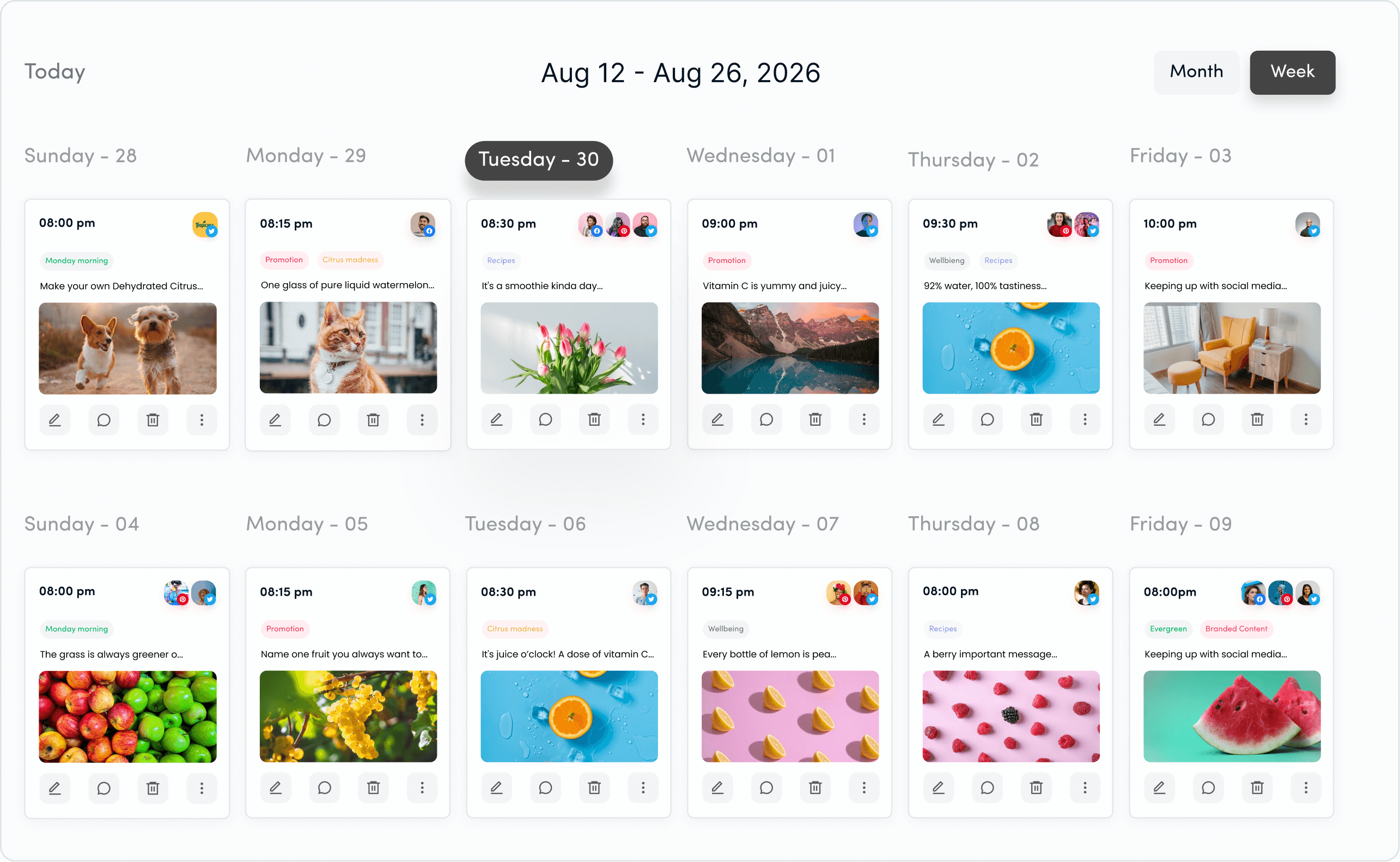
Why is choosing the right social media marketing platforms important?
Selecting appropriate social media platforms is like finding the perfect venue for your brand’s story. Each platform offers unique opportunities to connect with specific audience segments differently.
Impact on ROI and resource allocation
The platforms you choose directly impact your marketing ROI. Focusing on channels where your audience actively engages maximizes your investment, while spreading yourself too thin across irrelevant platforms wastes valuable resources. Studies show businesses concentrating on 2-3 well-matched platforms achieve 67% higher engagement rates than those attempting to maintain presence across 5+ channels.
Audience targeting precision
Each platform attracts distinct demographic groups with unique behaviors and preferences. For example, LinkedIn users typically seek professional content, while TikTok users crave entertaining, authentic short-form videos. Understanding these nuances ensures your content resonates with the right audience in the right context.
Algorithm compatibility
Social media algorithms determine content visibility, and each platform prioritizes different factors. Instagram favors high-engagement content, while LinkedIn rewards thought leadership and industry expertise. Aligning your content strategy with algorithm preferences dramatically improves organic reach.
The social media platform landscape in 2025
Before diving into the selection process, let’s examine how the major platforms compare across key dimensions in 2025:
| Platform | Monthly Active Users | Primary Demographics | Content Focus | Organic Reach Potential | Paid Advertising Effectiveness | Best For |
|---|---|---|---|---|---|---|
| 3.0B+ (Statista) | 25-54, broad | Mixed | Low-Medium | Very High | Community building, targeted ads | |
| 2.0B+ (Backlinko) | 18-34 | Visual, Stories, Reels | Medium | High | Brand awareness, product showcasing | |
| 1.0B+ (LinkedIn) | 25-55, professionals | Text, thought leadership | Medium-High | High (B2B) | B2B marketing, recruiting | |
| TikTok | 1.1B+ (Wallaroo Media) | 16-34 | Short-form video | Very High | Medium-High | Viral content, youth audiences |
| X/Twitter | 335M+(Soax.com) | 25-49, news-focused | Text, real-time | Medium | Medium | Customer service, trend engagement |
| 553M+(Statista) | 25-44, female-skewed | Visual inspiration | High | Medium-High | Product discovery, DIY content | |
| YouTube | 2.49B+(Backlinko) | All ages | Long/short video | Medium | High | Education, entertainment |
How to choose the right platform for your social media marketing?
When navigating the vast world of social media, it’s more than just numbers and algorithms; it’s about connecting with people. Here’s my take on how to choose the right social media marketing platforms with a personal touch:
1. Analyze your industry landscape
Your industry significantly influences which platforms will yield the best results. Begin by examining where competitors and industry leaders maintain their strongest presence.
Industry-specific platform preferences
- B2B companies: LinkedIn is typically the powerhouse, with 80% of B2B leads coming from this platform, according to recent studies. Twitter and YouTube also perform well for thought leadership content. Learn more about crafting an effective B2B social media strategy.
- E-commerce & retail: Visual platforms like Instagram, Pinterest, and TikTok drive the highest conversion rates, with Instagram Shopping features generating up to 3x higher engagement than traditional product posts. Discover how to boost your Instagram engagement rate for better results.
- Service businesses: Facebook and Instagram excel for local service providers, with Facebook Groups building community engagement and Instagram showcasing service quality through visual content. Find out how to build a Facebook community for sustained growth.
- Creative industries: Visual-first platforms like Instagram, Pinterest, and increasingly TikTok provide natural showcases for creative work, with Pinterest driving extreme traffic for design-related businesses.
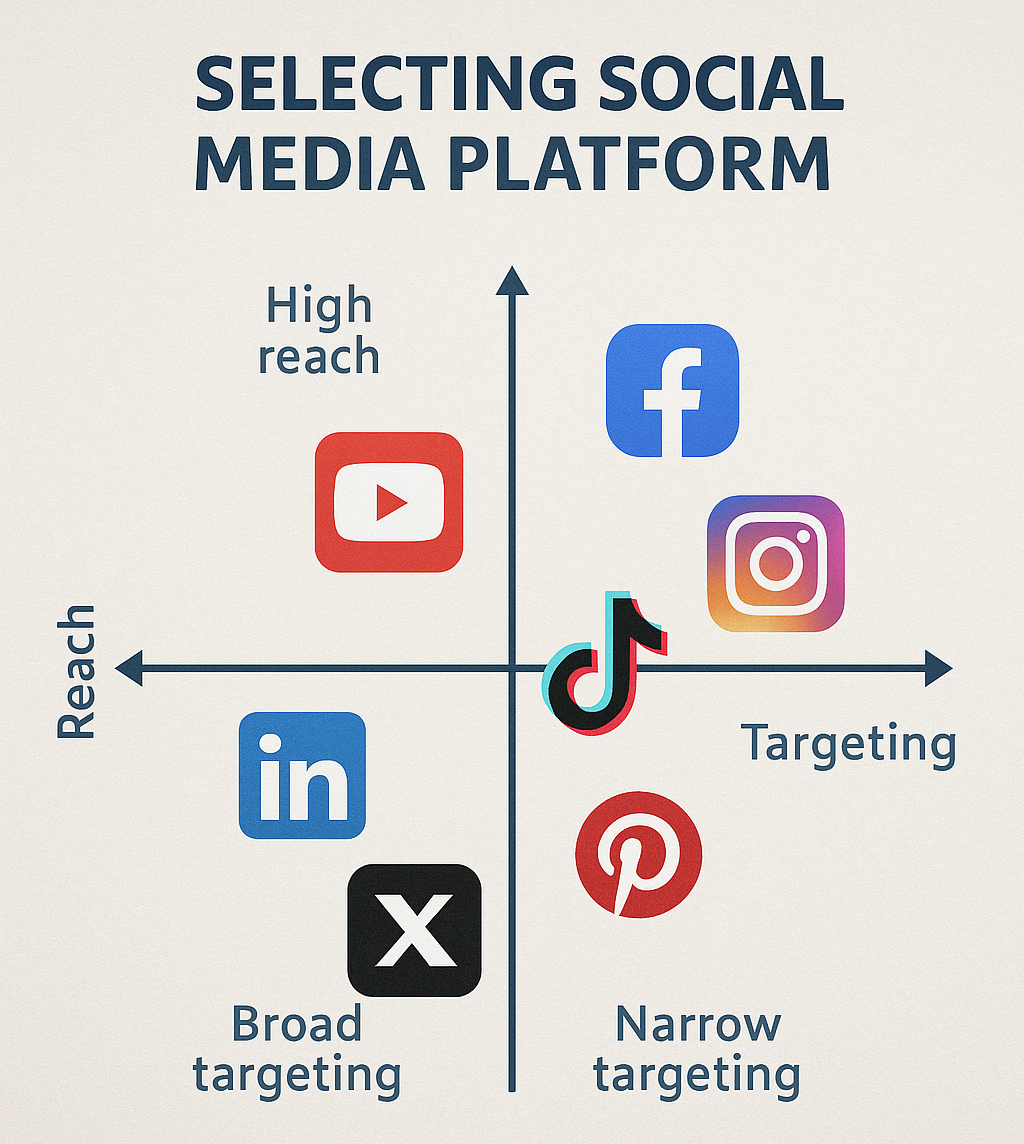
2. Benchmark competitor performance
Conduct a thorough analysis of 5-10 competitors’ social media presence. Note:
- Which platforms they prioritize
- Content types that generate highest engagement
- Posting frequency and timing patterns
- Audience growth trends across platforms
This competitive intelligence reveals the most effective platforms within your specific industry segment. Implementing a proper social media monitoring strategy can help you gather this competitive data effectively.
There might be untapped potential there. Learn from their coffee brewing technique, but add your own secret blend.
A complete analysis can be done using social media analytics tools like ContentStudio that give a detailed insight at a glance:
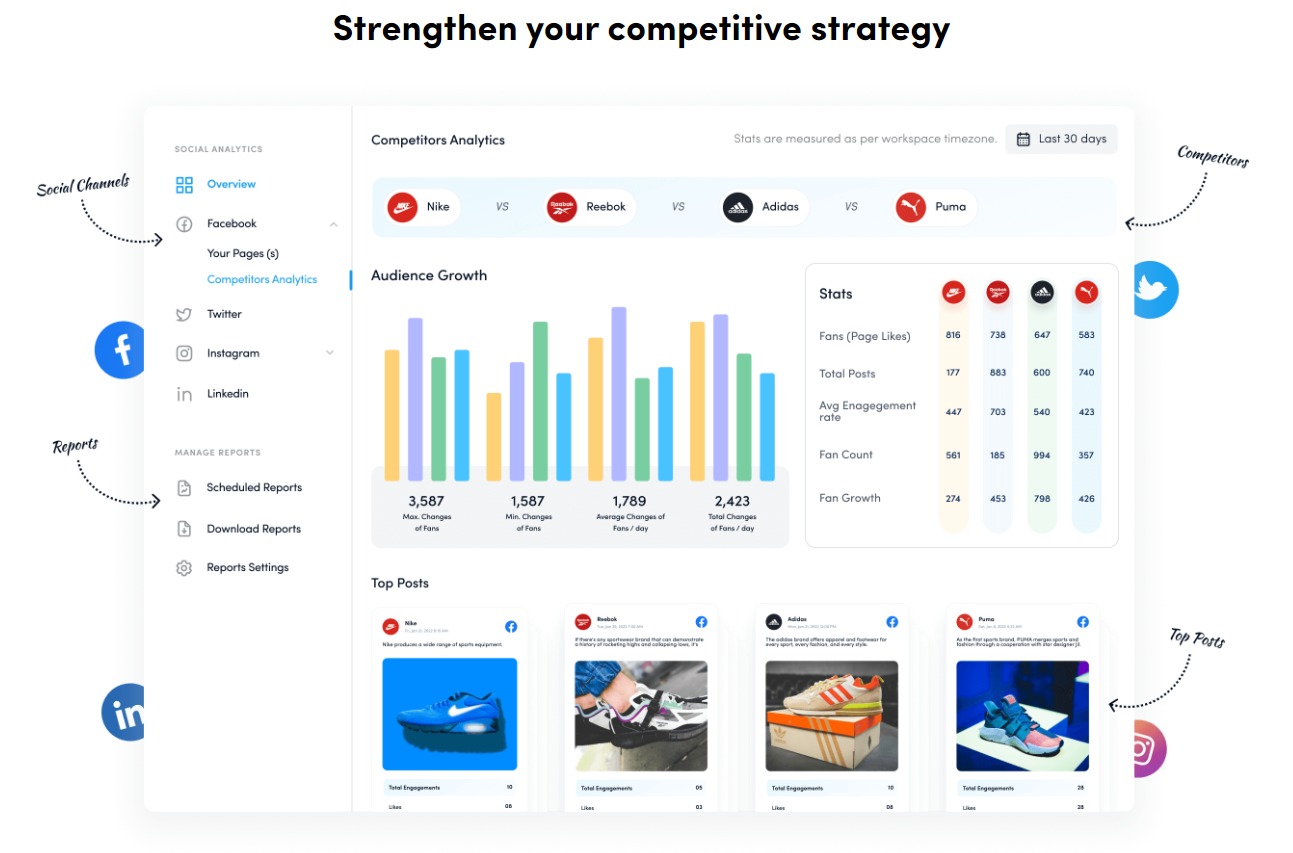
Understanding your competitors’ strategies is like having a road map through uncharted territory.
Here’s a comprehensive guide, complete with real-world examples, on how to analyze your competitors’ platform presence effectively:
- Identify your competitors:
You can only analyze your competitors if you know who they are. Identify businesses or individuals in your niche or industry competing for the same target audience.
If you run a boutique bakery, your competitors could include nearby bakeries, specialty dessert shops, or even online cake decorators who ship nationwide.
- Examine their social media profiles:
Explore your competitors’ social media profiles to gain insight into their content, engagement strategies, and audience interactions.
If you’re in the fitness industry, observe how a competitor gym uses Instagram to share workout tips, client testimonials, and behind-the-scenes glimpses of trainers in action.
If you are a sportswear brand, ContentStudio’s competitor analysis tool can help you examine social profiles:
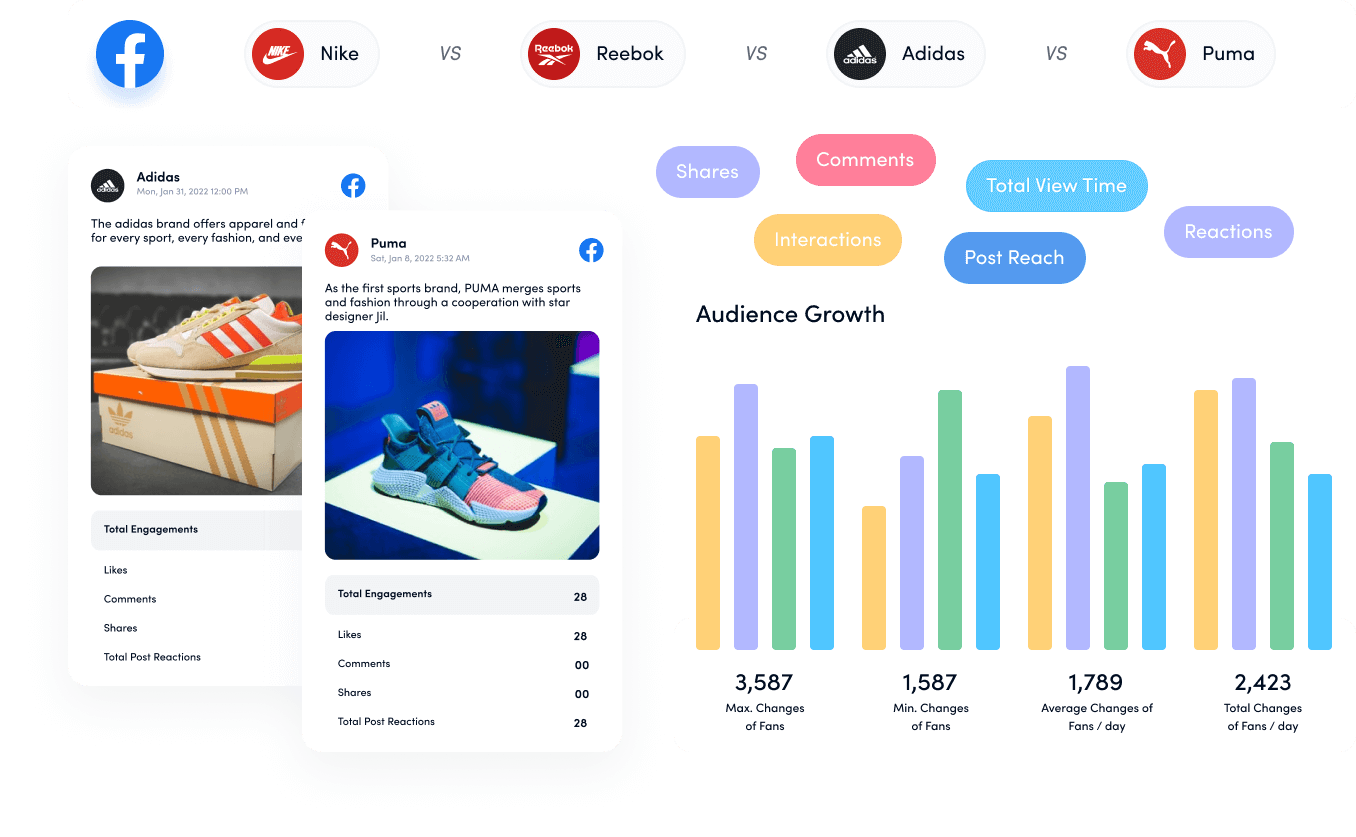
- Content analysis:
Take a closer look at the type of content your competitors are posting. Are they using images, videos, or blog posts? What topics do they cover, and how frequently do they post?
A travel agency might notice that a competitor regularly shares travel guides and destination highlights on their blog, leading to increased organic traffic and engagement.
- Engagement metrics:
Engagement metrics, such as likes, comments, and shares, indicate how effectively your competitors’ content resonates with their target audience.
A fashion brand might find that a competitor’s posts featuring user-generated content receive more likes and shares than product shots, indicating a preference for authenticity.
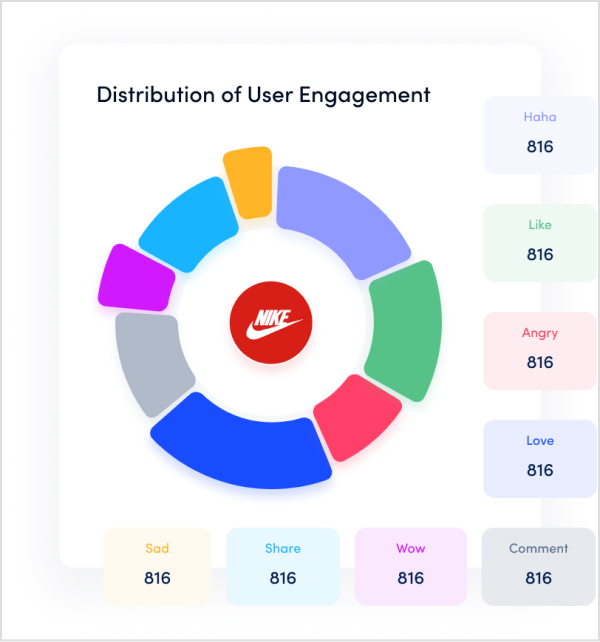
- Follower demographics:
Analyze your competitors’ follower demographics to understand who their audience is. Look for age, gender, location, and interests.
An eco-friendly cleaning product company may discover that its competitor’s Instagram audience primarily consists of environmentally conscious millennials in urban areas.
- Posting schedule and frequency:
Examining when and how often your competitor’s posts can help you determine optimal and best posting times and cadence.
A tech startup may find that a competitor consistently posts industry news every weekday morning, attracting professionals to check their social media over coffee.
- Engagement tactics:
Pay attention to your competitors’ strategies to engage with their audience, such as responding to comments, running contests, or leveraging user-generated content.
A pet food brand may notice that a competitor frequently hosts “Pet of the Month” contests, encouraging customers to share photos of their pets to win free products.
- Analyze their website and landing pages:
A competitor’s website can reveal valuable information about their sales funnel, lead generation efforts, and product offerings.
A software company might explore a competitor’s website and discover they offer free downloadable whitepapers in exchange for visitor’s valid email addresses, a strategy that builds their email list.
- Social advertising:
Investigate whether your competitors are running social media advertising campaigns. This can provide insights into their promotional strategies and target audience.
An e-commerce store might notice a competitor running Facebook ads promoting seasonal sales to users who have previously visited their website but have not purchased it.
- Track their influencer partnerships:
Identify if your competitors are collaborating with influencers. This can shed light on potential marketing opportunities within your niche.
A makeup brand could observe a competitor partnering with beauty influencers to showcase new product launches, prompting them to explore similar collaborations.
Study your competitors’ social media strategies to gain insight into their approaches. Analyze the platforms on which they are active and the level of success with which they engage their audience. Identify gaps in their strategy that you can exploit. Learning from their successes and failures can provide valuable insights into platform selection.
3. Assess your available resources
Let’s be honest; we all have limitations.
Managing a presence on every social media platform can be overwhelming if you’re a one-person show or a small business. I’d recommend starting with the platforms that align with your resources. You could create fantastic short videos for TikTok, or you’re a wordsmith for Twitter. Choose platforms that allow you to shine without spreading yourself too thin.
Related read: How to build an effective social media strategy.
Your available resources, including time, budget, and personnel, play a significant role in platform selection. Managing multiple social media accounts can be resource-intensive. Smaller businesses or individuals might prioritize platforms that align with their content creation and engagement capacity.
Be realistic about your capacity to maintain quality presence across multiple platforms. Resource constraints often determine which platforms are practical for your business.
Social media management approaches based on resources
| Resource Level | Recommended Approach | Platform Strategy | Content Creation | Analytics |
|---|---|---|---|---|
| Solo Entrepreneur | DIY focused | 1-2 platforms max | Content batching, repurposing | Basic native analytics |
| Small Business | Part-time social media role | 2-3 platforms | Mix of original and curated content | Simple third-party tools |
| Medium Business | Dedicated social media manager | 3-4 platforms | Regular original content, content calendar | Comprehensive analytics |
| Enterprise | Social media team | Multi-platform presence | Strategic content production, platform-specific assets | Advanced analytics and attribution |
4. Define clear platform-specific goals
Why do you want to be on social media? For your business, it could be entirely different from someone else’s. Are you looking to create a buzz around a new product, engage with your customers, or simply showcase your expertise?
Each platform has unique strengths that can help you achieve specific goals.
Clearly define your social media goals. Are you aiming to increase brand awareness, drive website traffic, generate leads, or boost sales?
Each platform has unique strengths that align with specific objectives. For instance, Facebook is great for community building, while YouTube is ideal for educational content.
Also read: How to build a Facebook community for SAAS business?
Here, we’ll dive deeper into various objectives you might consider:
- Increasing brand awareness:
Brand awareness is the bedrock of your online presence. It’s about ensuring that your brand comes to mind when people think of your industry.
To measure success, we look at metrics like reach, impressions, and share of voice in your industry or the strength of your brand identity. Monitor the growth of your social media following and brand mentions.
This can be achieved by sharing compelling and consistent brand stories, eye-catching visuals, and memorable messaging.
Nowadays, collaboration with influencers and engaging in partnerships that align with your brand values to extend your reach is the most beneficial. Here is an example:
- Driving website traffic:
Your website is your digital hub where conversions happen. Driving traffic to your site increases users’ opportunities to explore and engage with your content, products, or services.
This can be done by analyzing website analytics to track the number of visitors coming from social media, their behavior on your site, and conversion rates.
There are several ways to drive website traffic, such as sharing content that teases what’s on your website using intriguing headlines and visuals. Promote blog posts, landing pages, and product pages. Use trackable links and consider running targeted ad campaigns.
- Generating leads:
Leads are potential customers who have shown interest in your offerings. Converting them into customers is more manageable than starting from scratch.
To generate more leads, offer valuable resources like ebooks, webinars, or exclusive discounts to incentivize sign-ups. Use compelling CTAs, landing pages, and automated email marketing to nurture leads into conversions.
Here is one of the ways ContentStudio does it gracefully with the help of popup CTA:

- Increasing engagement:
Engagement goes beyond likes and shares; it’s about forging deeper connections with your audience, which can lead to brand loyalty and advocacy.
Social Customer Service Never miss a message or comment from your social media audience. Try ContentStudio’s Inbox.
To increase engagement, create content that sparks conversations. Run interactive campaigns, contests, and polls. Respond promptly and thoughtfully to comments and messages. Showcase user-generated content and stories.
Related read: 15 tips for you to grow your Instagram engagement rate!
Here is an example of how a well-known coffee brand does it on its Instagram:

- Boosting sales and conversions:
Ultimately, social media should contribute to revenue generation by converting followers into paying customers.
You can boost sales and conversions by sharing product showcases, customer reviews, and success stories.
Implement shoppable posts and integrate easy purchase options. Leverage retargeting ads to re-engage potential customers who showed interest but didn’t convert.
Related read: Growth marketing – Top tactics & examples.
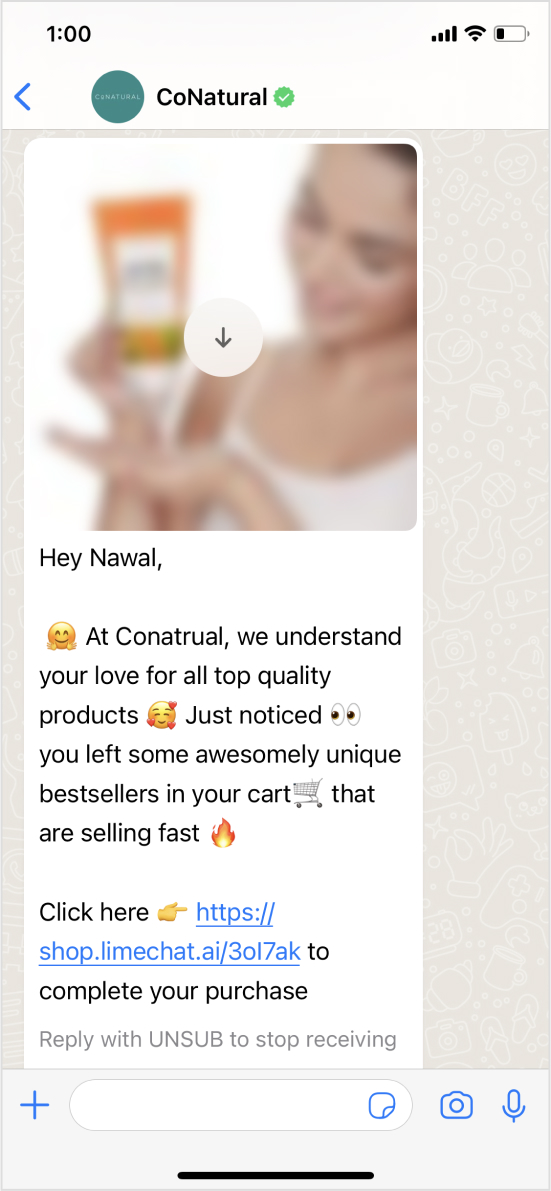
Here’s how a skincare brand retargets its potential customers who left the items in the cart:
- Improving customer support:
Social media isn’t just a megaphone for your brand; it’s also a two-way communication channel.
Providing exceptional support here can enhance your brand’s reputation.
To improve customer support, establish dedicated support channels on social media platforms. Train your support team to handle inquiries professionally and empathetically. Implement chatbots for quick responses and routing queries.
Actively seek feedback and use it to improve your support services. Below is an example of good support handling.
P.S. ever wondered why brands need a social media monitoring strategy?

Remember, your social media strategy’s success hinges on aligning your goals with your business objectives.
5. Identify your target audience’s platform preferences
Understanding your audience is like knowing your regular customers by name. You need to determine where they congregate.
Platforms like LinkedIn might not be your go-to choice if your cafe caters to young professionals. Consider demographics, interests, and online behavior to find the perfect match between your audience and social media marketing platforms.
Identifying and understanding your target audience is like tailoring a suit – it should fit perfectly.
Here’s a comprehensive guide with real-world examples to help you master this crucial step in creating a successful marketing strategy:
Also read: How to build an effective video marketing strategy.
- Market research:
Market research is the foundation of understanding the audience. It helps you grasp your industry’s landscape and discover unmet needs.
If you plan to launch a new fitness app, research may reveal a growing trend toward home-based workouts, driven by the pandemic.
This insight could guide your app’s features and marketing strategy.
- Create buyer personas:
Buyer personas are fictional characters representing your ideal customers. They humanize your audience and provide actionable insights.
For a boutique travel agency, a buyer persona might be “Adventurous Amy,” a 30-year-old marketing professional who values unique travel experiences. Knowing Amy’s preferences helps tailor travel packages and content to her tastes.
- Analyze existing customers:
Your existing customers are a goldmine of information. Analyze their data to discover and uncover trends and preferences.
Related read: 14 Instagram trends to boost your social presence in 2025.
A subscription box service might find that most long-term subscribers are young professionals who prefer eco-friendly and sustainable products.
This can lead to curated boxes that align with this preference.
- Engage with your audience:
Direct interaction is priceless.
Engage with your audience through various channels to gain firsthand insights.
A clothing brand could engage with customers on social media, asking for feedback on new designs. They can adjust their upcoming collections if they notice a preference for specific colors or styles. Here is how:

Also read: 12 Instagram hacks to boost engagement.
- Use analytics:
Social media analytics offer a wealth of data on user behavior across your digital platforms.
An e-commerce website, for example, can use analytics to see that a specific product category receives the most views but has a high bounce rate.
This may indicate that visitors are interested but need assistance in finding what they want, prompting product listings or navigation adjustments.
Social Media Analytics Fine-tune your social media strategy for success with in-depth analytics and white-labeled reports.
Understanding your target audience is paramount. Social media analytics tools like ContentStudio make it easier for businesses to evaluate their growth and performance:
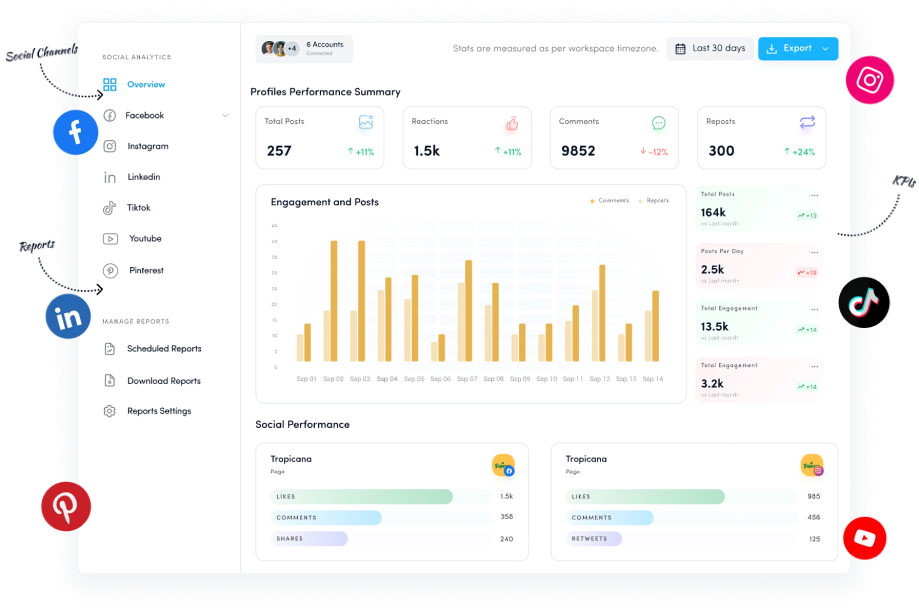
6. Craft platform-optimized content strategies
Think of your brand’s voice as the ambiance of your coffee shop. Each platform has its vibe, like a cozy corner cafe with soft jazz playing in the background.
On Instagram, it’s like chatting with your barista: friendly, personal, and visual. But on LinkedIn, it’s a more professional conversation.
Adapt your tone and content to resonate with the platform’s culture.
Each platform has unique content requirements and audience expectations. Develop tailored strategies that play to each platform’s strengths. Building a consistent brand voice with social media automation can help maintain cohesion across platforms.
Platform-specific content optimization
Instagram strategy
- Focus on high-quality visuals and short-form video content
- Utilize Stories for time-sensitive content and behind-the-scenes glimpses
- Incorporate engaging carousel posts for educational content
- Leverage Reels for maximum reach and discovery
- Key metrics: Engagement rate, Story completion rate, Reels views
- Try these Instagram hacks to boost engagement
LinkedIn strategy
- Emphasize thought leadership and industry expertise
- Share company milestones and professional achievements
- Create longer-form articles on industry trends
- Engage in relevant professional groups
- Key metrics: Post impressions, profile views, connection growth rate
TikTok strategy
- Create authentic, trend-driven short videos
- Participate in relevant challenges and trending sounds
- Focus on entertaining and educational content
- Maintain consistent posting schedule
- Key metrics: Video completion rate, shares, follower growth
Facebook strategy
- Build community through groups and interactive content
- Share diverse content formats including video, images, and links
- Utilize events for direct engagement opportunities
- Leverage detailed targeting for promotional content
- Key metrics: Reach, group engagement, event responses
For video-heavy platforms, developing a comprehensive video marketing strategy is essential for success.
7. Implement testing and measurement systems
Successful platform selection requires ongoing performance analysis and willingness to adjust based on data.
Structured testing approach
- Establish platform-specific baseline metrics for each channel
- Set meaningful KPIs aligned with business objectives
- Implement A/B testing for content formats, posting times, and messaging
- Create a quarterly review process to assess platform performance
- Allocate resources based on performance data, not assumptions
Essential metrics to track by platform
Engagement metrics
- Likes, comments, shares, saves
- Engagement rate (engagement divided by reach)
- Video completion rates
- Click-through rates
Growth metrics
- Follower growth rate
- Reach and impression trends
- New vs. returning audience
Conversion metrics
- Traffic to website
- Lead generation performance
- Conversion rate by platform
- Cost per acquisition
Use comprehensive analytics tools to consolidate data across platforms for comparative analysis, allowing you to double down on high-performing channels.
8. Integrating social media platforms with your website
An often overlooked aspect of platform selection is how well each integrates with your main website and customer journey. Consider these integration strategies:
- Website-to-social connectors
- Strategically placed social follow buttons
- Content sharing functionality
- Social login options to reduce friction
- Social proof elements (reviews, UGC displays)
- Social-to-website pathways
- Clear CTAs in social profiles and content
- Trackable links for attribution
- Landing pages designed for social traffic
- Retargeting campaigns for social visitors
According to research, businesses with strong social-website integration see 78% higher conversion rates from social media traffic compared to those with disconnected experiences.
Some major social media platforms
Now that you have enough knowledge to choose the right social media marketing platforms that set well for your business let’s have a look at some major social media platforms to help you connect with your target audience:
1. Facebook

With its staggering 3.065 billion monthly active users as of 2025, Facebook surpasses China’s population. However, it’s vital to recognize how people use Facebook as a platform to nurture relationships and stay in touch with old friends.
Apart from the Facebook Live feature, it allows you to post photos, text, videos, and other types of content. This makes Facebook an ideal space for fostering loyalty among your existing customer base.
Yet, it may be challenging to reach new audiences due to its massive user base, limiting the organic reach of your posts, even within your networks.
Facebook Marketing Manage and grow your brand on Facebook. Create, schedule, and publish posts, videos, and Reels to Facebook pages and groups.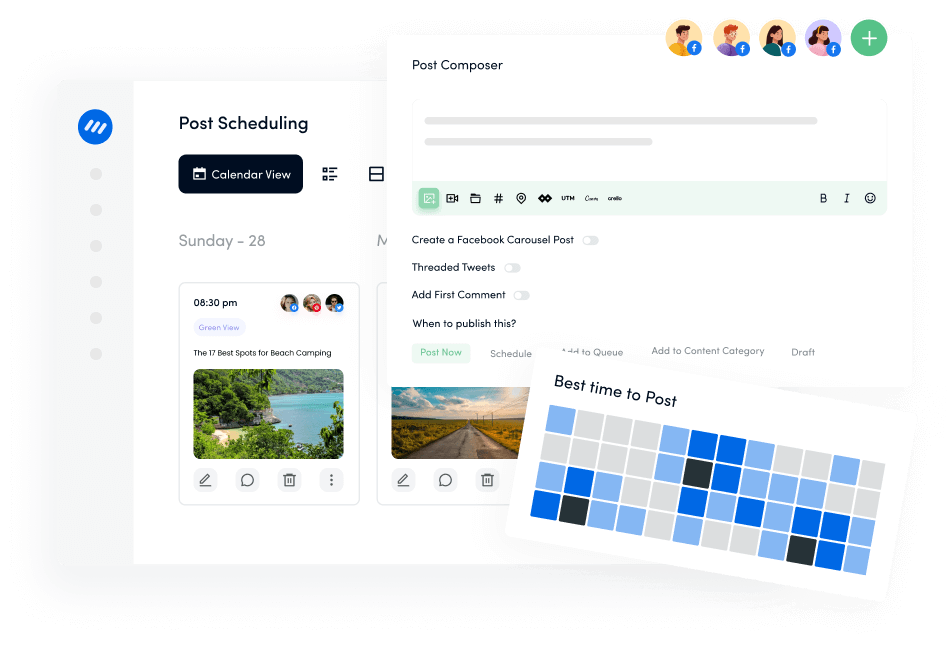
When considering Facebook as one of your social media marketing platforms, carefully align it with your business objectives. It might not be the best choice if you aim to acquire new customers. Still, if you’re dedicated to maintaining a loyal clientele and need a platform for consistent communication, Facebook is an excellent option.
P.S. looking for the perfect Facebook scheduler?
2. X (Formerly Twitter)

X(Twitter) is a powerful platform for brand awareness, with its 611 million monthly active users. Making connections, sharing resources, and keeping updated with the latest news and trends make it the right fit for your business. Its use of hashtags enables you to join conversations on trending topics, providing insight into what is currently capturing people’s attention.
Twitter impressions also significantly contribute to brand awareness and reach. Brands often use Twitter for real-time updates and event engagement.
You can create and share viral tweets with the ultimate Twitter scheduler and enhance your brand’s visibility and engagement by strategically participating in relevant conversations and hashtags.
3. Pinterest

Pinterest is a digital scrapbook with 518 million monthly users where users “pin” photos and videos to virtual bulletin boards.
It predominantly attracts a female audience, and standard pins range from recipes and style ideas to captivating images and DIY projects. Given its visual nature, Pinterest demands compelling graphics to captivate users.
Successful businesses on Pinterest often report increased retail sales, making it an attractive platform for visually oriented brands. If you’re worried, we have a complete guide to schedule Pinterest pins just for you!
Related read: Guide to Pinterest analytics
4. YouTube

YouTube receives over 79 billion user visits monthly, surpassing the visitor counts for Facebook, Instagram, and even Wikipedia. YouTube transcends its user base, as content can be viewed without registration.
It allows you to view, download, rate, comment on, and even upload your content. It has become one of the largest search engine platforms for “How To” videos. Service-based businesses that offer instructional content thrive here, with creators focusing on lifestyle and education, while keeping in mind YouTube SEO tactics.
Related read: 50 YouTube stats that will inspire you in 2025.
5. LinkedIn

LinkedIn stands out as a platform favored by older audiences, particularly those aged 25 to 49. It maintains a niche focus and is primarily used for job searches and professional networking.
Consequently, LinkedIn proves valuable for B2B lead generation, professional networking, and recruitment efforts.
Related read: How to use LinkedIn creator mode effectively?
LinkedIn Marketing Establish your brand’s profile on LinkedIn by consistently posting engaging content and engaging with the community.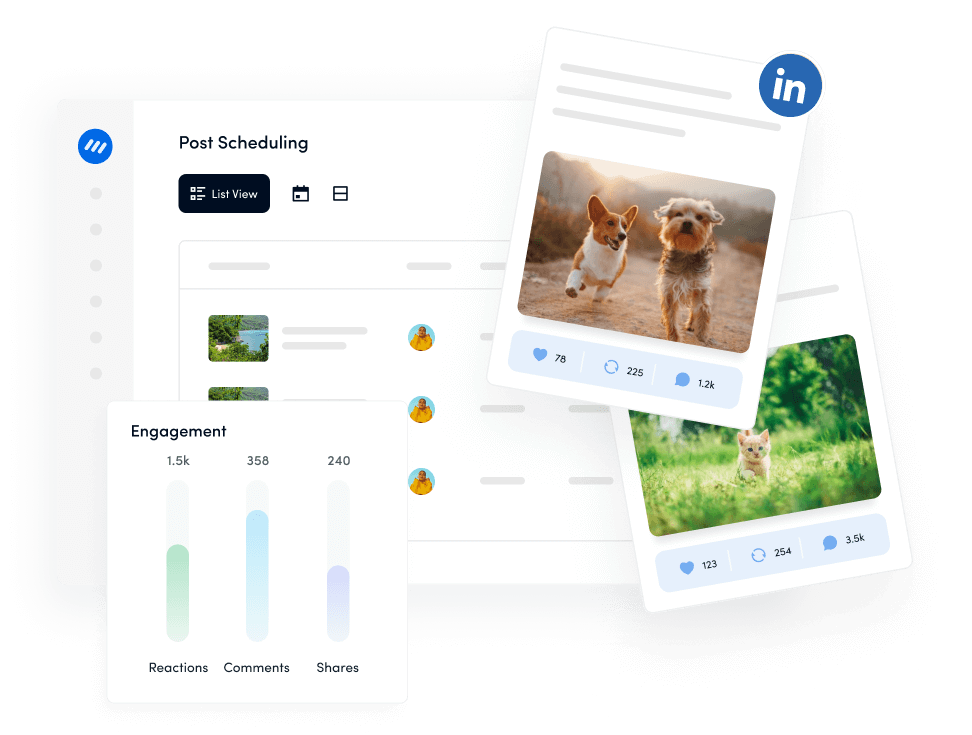
6. Instagram

Instagram, one of the fastest-growing social media platforms, particularly among younger audiences, places a strong emphasis on visual content.
Users can follow, comment, and send direct messages for any queries or communication. Much like Pinterest, it relies on photos and short-form videos, Instagram reels for communication. As such, Instagram excels for businesses in visually oriented industries, such as art, food, retail, and beauty. Its relative newness also means less saturation than Facebook, making it a prime platform for lead generation, expanding your reach, and boosting your sales. Instagram shops and shoppable posts also provide you with a better business avenue.
Wondering how to use Instagram to stay ahead of your competitors? Try our free Instagram competitor analytics tool!
Instagram Marketing Schedule your Instagram posts, Reels, and Stories, and get recommended best time to publish for maximum engagement.
Also read: Instagram for business: 14 tips to grow your audience.
7. TikTok

TikTok is renowned for its 15-second short-form videos and primarily caters to a youthful demographic.
It’s especially effective for targeting the 18-24 age group and building brand awareness. Like Pinterest and Instagram, TikTok is well-suited for visually oriented businesses in the art, food, retail, beauty, and service industries.
Related read: How to build a TikTok marketing strategy for your business?
Social media platform selection matrix: make data-driven decisions
To help you make objective platform decisions, we’ve created this decision matrix tool. Rate each platform on a scale of 1-5 for each factor based on your business needs, then calculate the total score to see which platforms rank highest for your specific situation.
| Platform Selection Factors | Weight | TikTok | YouTube | |||||
|---|---|---|---|---|---|---|---|---|
| Target Audience Match | 5 | 4 | 5 | 3 | 4 | 3 | 3 | 4 |
| Content Type Alignment | 4 | 3 | 5 | 2 | 5 | 3 | 4 | 5 |
| Available Resources | 4 | 4 | 4 | 3 | 2 | 4 | 3 | 2 |
| Business Objectives Match | 5 | 4 | 4 | 5 | 3 | 3 | 3 | 5 |
| Competitor Presence | 3 | 5 | 4 | 3 | 2 | 3 | 2 | 4 |
| Industry Relevance | 4 | 3 | 4 | 5 | 3 | 3 | 3 | 4 |
| Platform Growth Trajectory | 3 | 2 | 4 | 3 | 5 | 3 | 2 | 4 |
| TOTAL SCORE | 86 | 101 | 83 | 79 | 74 | 70 | 94 |
How to use this matrix:
- For each factor and platform, assign a score from 1-5 (1=poor fit, 5=excellent fit)
- Multiply each score by the weight
- Sum the weighted scores for each platform
- The platforms with the highest total scores represent your best strategic options such as Instagram in the above example.
Wrap up
The perfect social media marketing mix is unique to each business. By methodically analyzing your industry, resources, goals, audience, and content capabilities, you can identify the platforms that will deliver maximum impact for your specific situation. Hence there is no one-size-fits-all social media platform for achieving marketing success.
Remember these core principles as you develop your platform strategy:
- Quality trumps quantity – Better to excel on fewer platforms than be mediocre on many
- Stay adaptable – Platform capabilities and audience preferences evolve rapidly
- Follow the data – Let performance metrics guide your platform decisions
- Maintain authenticity – Each platform has its own culture, but your brand voice should remain consistent
- Focus on community – The most successful social media strategies prioritize meaningful connections over broadcast messaging
By implementing this strategic approach to platform selection, you’ll maximize your social media marketing effectiveness, ensuring that resources are allocated to the channels that’ll drive real business results. Begin by developing a comprehensive social media strategy that aligns with your chosen platforms.
FAQs
What factors should I consider when choosing a social media marketing platform?
Consider your target audience, platform demographics, and unique features, as well as how each platform aligns with your content and engagement goals.
How can I stay updated on social media trends?
Keep an eye on industry blogs, follow social media experts, and use analytics tools to track emerging trends and shifts in user behavior.
How do I measure the success of my social media strategy?
Track key metrics like engagement, reach, conversions, and ROI using built-in analytics and third-party tools to see if your strategy is working.
How many social media platforms should my business be on?
Most businesses achieve optimal results focusing on 2-4 primary platforms, depending on resources and audience demographics. Quality engagement on fewer platforms is more effective than diluted presence across many.
How can I manage multiple platforms efficiently?
Use social media management tools that support cross-platform publishing, engage with audiences through unified inboxes, and leverage content scheduling to maintain consistent presence. Tools like ContentStudio, Hootsuite, and Sprout Social can significantly reduce management overhead.
Recommended for you

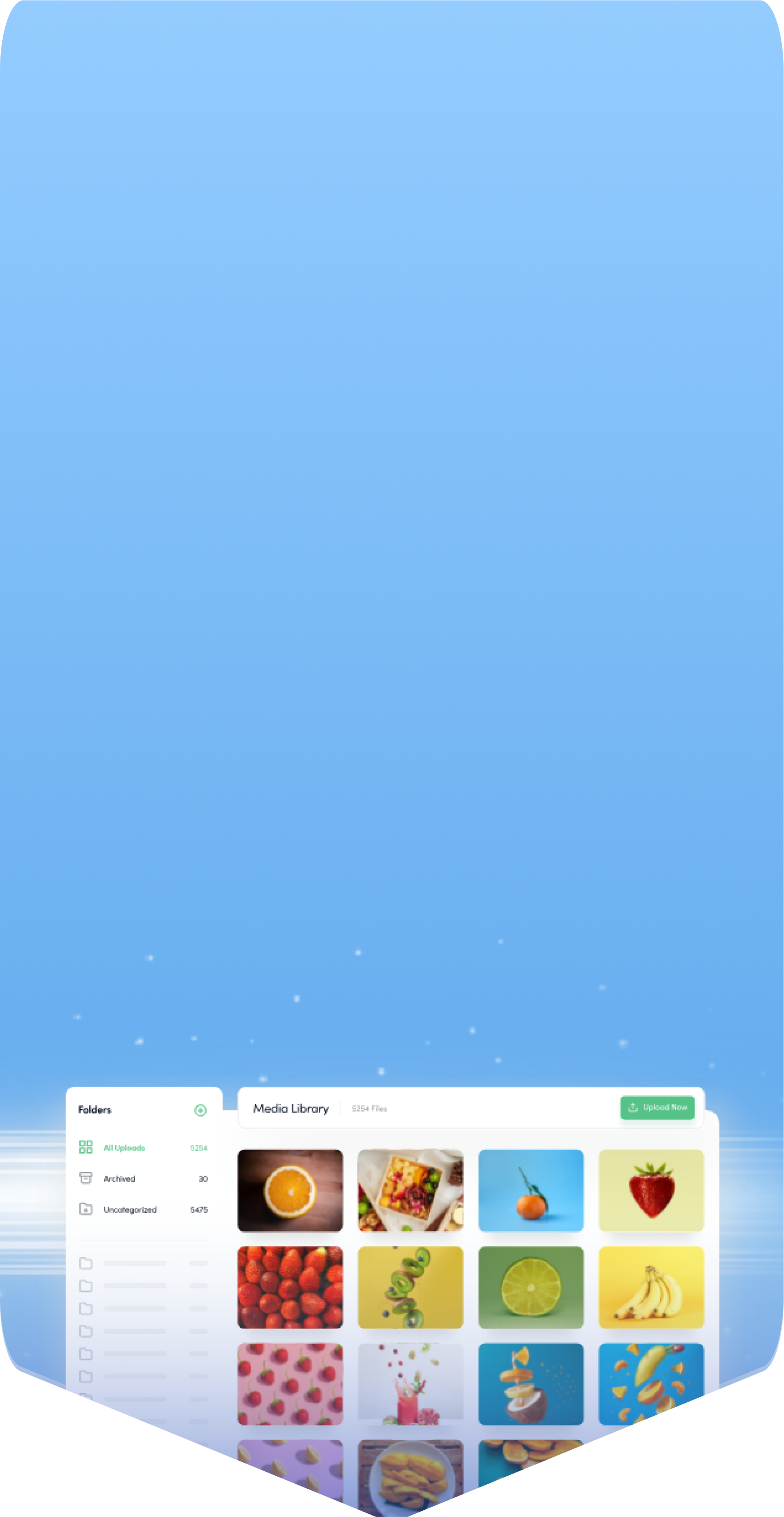
Powerful social media management software
14-day free trial - No credit card required.
